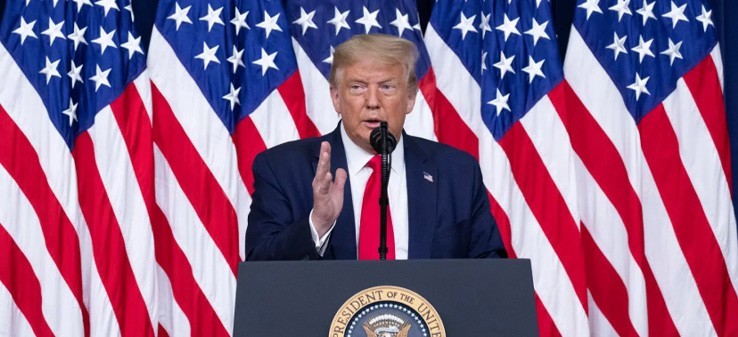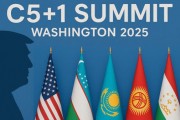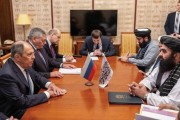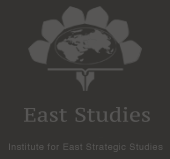Publish Date
Tuesday 17 June 2025 - 14:48
recommended
0
Trump and Afghanistan
The Foreign Policy of Trump's Second Administration: Implications for Afghanistan
The foreign policy of the second Trump administration bears many similarities to that of the first. The most important of these similarities include rhetorical and behavioral inconsistencies, grand but unfulfilled claims, aversion to institutionalism and multilateralism, and erratic extreme stances—particularly on trade issues. In foreign policy, particularly with regard to Afghanistan, the second Trump administration is likely to prioritize U.S. national interests such as counterterrorism, military disengagement, and economic considerations over human rights concerns. However, the second Trump administration’s foreign policy is likely to place Afghanistan in a precarious position and away from the international community’s attention. In such a context, limited international pressure on the Taliban to ensure the protection of women and girls is expected to continue.
By: Seyyed Ahmad Fateminejad
7 minutes Reading
Introduction
Following his victory in the November 2024 elections, Donald Trump returned to the presidency after a four-year hiatus and resumed his distinctive foreign policy approach. This strategy can be traced through Trump’s own behavior and the positions of key figures in his cabinet.
Before the formation of Trump’s second administration, U.S. foreign policy analysts considered two potential trajectories:
7 minutes Reading
The Foreign Policy of Trump Second Administration: Implications for Afghanistan
Introduction
Following his victory in the November 2024 elections, Donald Trump returned to the presidency after a four-year hiatus and resumed his distinctive foreign policy approach. This strategy can be traced through Trump’s own behavior and the positions of key figures in his cabinet.
Before the formation of Trump’s second administration, U.S. foreign policy analysts considered two potential trajectories:
1. Continuation of his first-term strategy
2. A course correction based on the failures of the first term
2. A course correction based on the failures of the first term
However, it has now become evident that Trump’s second-term foreign policy closely mirrors that of his first term. Key similarities include rhetorical and behavioral inconsistencies, grand but unfulfilled claims, instability of the positions of influential officials in foreign policy (e.g., the dismissal of National Security Advisor Waltz), aversion to institutionalism and multilateralism, and erratic extreme stances—particularly on trade issues.
Given that only a short time has passed since the new administration took office, the central aspects of Trump’s first-term policies still offer a useful framework for understanding the shape of his current foreign strategy. This article aims to explain the foreign policy outlook of Trump’s second term and its specific implications for Afghanistan, drawing on past experiences and recent developments.
Main Pillars of Trump’s Foreign Policy
Trump’s foreign policy is best characterized by extreme nationalism, transactional diplomacy, and skepticism of multilateralism. His America First doctrine emphasizes U.S. supremacy, a drawdown of overseas military engagements, and disengagement from global governance institutions and traditional alliances. This approach is crucial in reshaping US diplomacy, particularly in the Middle East and Afghanistan. In this regard, Trump’s foreign policy strategy in the Middle East and Afghanistan has so far been a continuation of the approach of his first administration.
During his first term, Trump aimed to extricate the U.S. from so-called "endless wars" in Afghanistan, Iraq, and Syria. His administration’s efforts to end the US military intervention in Afghanistan culminated in peace talks with the Taliban and the Doha Agreement in 2020. However, Trump has since criticized the Biden administration’s handling of the agreement and is expected to adopt a more assertive posture in any future negotiations with the Taliban. In this regard, Trump has suspended several U.S. financial aid packages to Afghanistan in recent months.
In summary, Trump’s second-term foreign policy rests on the following tenets:
a) Strategic Non-Commitment: Trump will likely maintain his policy of reducing U.S. military commitments abroad, asserting that America should avoid "nation-building" and military interventions that do not directly serve national interests.
b) Transactional Diplomacy: Rather than relying on international institutions or multilateral diplomacy, Trump will likely prefer bilateral negotiations with key international players, as well as US adversaries such as the Taliban, North Korea, and Iran. The evolution of the Iran nuclear deal—from multilateral negotiations to direct U.S.-Iran talks—demonstrates this shift. The same pattern may be followed with Russia and possibly in renewed Taliban talks.
c) U.S. National Interests: Trump is expected to frame foreign policy decisions as advancing American interests, focusing on security, energy market dominance, and counterterrorism, rather than promoting human rights or democracy abroad. This represents a strategic realignment in U.S. foreign priorities.
The De-Prioritization of Human Rights
One of the most significant concerns regarding Trump's foreign policy—both in his first and second terms—is his stance on human rights. Trump has been widely criticized for sidelining human rights in favor of realism and national interest. His administration’s relationships with regimes like Saudi Arabia, Russia, and North Korea exemplified this approach, where human rights abuses were overlooked in favor of strategic or economic alliances. This trend is likely to continue in Trump's second term. In Afghanistan, therefore, the human rights situation—especially women’s rights—will likely further deteriorate.
Since the Taliban’s return to power in 2021, women have faced severe restrictions in education, employment, and public life, marking a dramatic reversal of post-2001 progress. Trump’s lack of prioritization of human rights is expected to exacerbate this trend. Furthermore, the administration’s emphasis on non-intervention will likely reduce pressure on the Taliban to adhere to international human rights standards.
Of course, this does not mean Trump and his officials will completely ignore human rights issues. Rather, they are likely to make general statements on human rights without incorporating them into the core of U.S. policy on Afghanistan. Humanitarian aid—particularly for Afghan women and girls—may continue, but it will likely be conditioned on Taliban cooperation in counterterrorism, not on commitments to gender equality. Additionally, Trump may outsource the promotion of human rights to local actors, international NGOs, or regional countries, while the U.S. government remains focused on its own security concerns.
The Second Trump Administration’s Approach to Afghanistan
Trump's first-term Afghanistan strategy combined military pressure with a swift pivot to negotiations with the Taliban—driven largely by his broader desire to end prolonged U.S. military involvement in the region. In his second term, Trump will likely continue to reduce U.S. military involvement, presenting it as a fulfillment of his America First agenda.
Trump’s stated goal during his first term was to withdraw American troops from Afghanistan. So while the chaotic nature of the Biden-era U.S. withdrawal tarnished the image of that agreement, Trump may see the eventual Taliban takeover of Afghanistan as a natural consequence of the U.S. withdrawal policy. He may even downplay the humanitarian consequences of the event, focusing on tax cuts for Americans and the need for other countries to step in and take responsibility.
Based on what has been said, Afghanistan’s fate in the second Trump term will likely be shaped by the following variables:
a) Negotiations with the Taliban: Trump may re-engage in diplomacy with the Taliban to ensure they uphold anti-terror commitments—particularly preventing Afghanistan from becoming a safe haven for extremist groups like Islamic State of Khorasan Province (ISKP) and al-Qaeda.
b) Limited Humanitarian Aid: Instead of a comprehensive foreign aid program, Trump’s administration may offer limited humanitarian assistance, conditional on Taliban cooperation in specific anti-terror or human rights assurances.
c) Continued Non-Recognition of the Taliban: Despite the above points—which arguably benefit the Taliban—the Trump administration is unlikely to grant official recognition to the Taliban or take the lead in doing so.
d) Continued Deterioration of Women’s Rights: Women’s rights, a key focus of the international community in Afghanistan post-2001, are expected to face further setbacks under Trump’s second term. Given Trump’s inconsistent positions and reluctance to bear foreign policy costs, this regression is unfortunately unsurprising.
Conclusion
In its second term, the Trump administration is expected to prioritize U.S. national interests—such as counterterrorism, military disengagement, and economic considerations—over human rights concerns, particularly in relation to Afghanistan. This policy direction may embolden the Taliban to intensify their repression of women, knowing that U.S. intervention is less likely.
Furthermore, by shifting its focus to American priorities rather than promoting democracy or protecting human rights, the Trump administration may weaken the international community’s ability to hold the Taliban accountable—particularly in their treatment of women and girls.
However, this does not necessarily equate to an endorsement of the Taliban. In fact, the foreign policy of the second Trump administration is likely to leave Afghanistan in an unstable position and away from the attention of the international community. As a result, limited international pressure to protect women and girls in Afghanistan is likely to persist.
Seyyed Ahmad Fateminejad, is a PhD in International Relations; Associate Professor of the Department of Political Science, Ferdowsi University of Mashhad; and Faculty Member of Ferdowsi University of Mashhad.
Given that only a short time has passed since the new administration took office, the central aspects of Trump’s first-term policies still offer a useful framework for understanding the shape of his current foreign strategy. This article aims to explain the foreign policy outlook of Trump’s second term and its specific implications for Afghanistan, drawing on past experiences and recent developments.
Main Pillars of Trump’s Foreign Policy
Trump’s foreign policy is best characterized by extreme nationalism, transactional diplomacy, and skepticism of multilateralism. His America First doctrine emphasizes U.S. supremacy, a drawdown of overseas military engagements, and disengagement from global governance institutions and traditional alliances. This approach is crucial in reshaping US diplomacy, particularly in the Middle East and Afghanistan. In this regard, Trump’s foreign policy strategy in the Middle East and Afghanistan has so far been a continuation of the approach of his first administration.
During his first term, Trump aimed to extricate the U.S. from so-called "endless wars" in Afghanistan, Iraq, and Syria. His administration’s efforts to end the US military intervention in Afghanistan culminated in peace talks with the Taliban and the Doha Agreement in 2020. However, Trump has since criticized the Biden administration’s handling of the agreement and is expected to adopt a more assertive posture in any future negotiations with the Taliban. In this regard, Trump has suspended several U.S. financial aid packages to Afghanistan in recent months.
In summary, Trump’s second-term foreign policy rests on the following tenets:
a) Strategic Non-Commitment: Trump will likely maintain his policy of reducing U.S. military commitments abroad, asserting that America should avoid "nation-building" and military interventions that do not directly serve national interests.
b) Transactional Diplomacy: Rather than relying on international institutions or multilateral diplomacy, Trump will likely prefer bilateral negotiations with key international players, as well as US adversaries such as the Taliban, North Korea, and Iran. The evolution of the Iran nuclear deal—from multilateral negotiations to direct U.S.-Iran talks—demonstrates this shift. The same pattern may be followed with Russia and possibly in renewed Taliban talks.
c) U.S. National Interests: Trump is expected to frame foreign policy decisions as advancing American interests, focusing on security, energy market dominance, and counterterrorism, rather than promoting human rights or democracy abroad. This represents a strategic realignment in U.S. foreign priorities.
The De-Prioritization of Human Rights
One of the most significant concerns regarding Trump's foreign policy—both in his first and second terms—is his stance on human rights. Trump has been widely criticized for sidelining human rights in favor of realism and national interest. His administration’s relationships with regimes like Saudi Arabia, Russia, and North Korea exemplified this approach, where human rights abuses were overlooked in favor of strategic or economic alliances. This trend is likely to continue in Trump's second term. In Afghanistan, therefore, the human rights situation—especially women’s rights—will likely further deteriorate.
Since the Taliban’s return to power in 2021, women have faced severe restrictions in education, employment, and public life, marking a dramatic reversal of post-2001 progress. Trump’s lack of prioritization of human rights is expected to exacerbate this trend. Furthermore, the administration’s emphasis on non-intervention will likely reduce pressure on the Taliban to adhere to international human rights standards.
Of course, this does not mean Trump and his officials will completely ignore human rights issues. Rather, they are likely to make general statements on human rights without incorporating them into the core of U.S. policy on Afghanistan. Humanitarian aid—particularly for Afghan women and girls—may continue, but it will likely be conditioned on Taliban cooperation in counterterrorism, not on commitments to gender equality. Additionally, Trump may outsource the promotion of human rights to local actors, international NGOs, or regional countries, while the U.S. government remains focused on its own security concerns.
The Second Trump Administration’s Approach to Afghanistan
Trump's first-term Afghanistan strategy combined military pressure with a swift pivot to negotiations with the Taliban—driven largely by his broader desire to end prolonged U.S. military involvement in the region. In his second term, Trump will likely continue to reduce U.S. military involvement, presenting it as a fulfillment of his America First agenda.
Trump’s stated goal during his first term was to withdraw American troops from Afghanistan. So while the chaotic nature of the Biden-era U.S. withdrawal tarnished the image of that agreement, Trump may see the eventual Taliban takeover of Afghanistan as a natural consequence of the U.S. withdrawal policy. He may even downplay the humanitarian consequences of the event, focusing on tax cuts for Americans and the need for other countries to step in and take responsibility.
Based on what has been said, Afghanistan’s fate in the second Trump term will likely be shaped by the following variables:
a) Negotiations with the Taliban: Trump may re-engage in diplomacy with the Taliban to ensure they uphold anti-terror commitments—particularly preventing Afghanistan from becoming a safe haven for extremist groups like Islamic State of Khorasan Province (ISKP) and al-Qaeda.
b) Limited Humanitarian Aid: Instead of a comprehensive foreign aid program, Trump’s administration may offer limited humanitarian assistance, conditional on Taliban cooperation in specific anti-terror or human rights assurances.
c) Continued Non-Recognition of the Taliban: Despite the above points—which arguably benefit the Taliban—the Trump administration is unlikely to grant official recognition to the Taliban or take the lead in doing so.
d) Continued Deterioration of Women’s Rights: Women’s rights, a key focus of the international community in Afghanistan post-2001, are expected to face further setbacks under Trump’s second term. Given Trump’s inconsistent positions and reluctance to bear foreign policy costs, this regression is unfortunately unsurprising.
Conclusion
In its second term, the Trump administration is expected to prioritize U.S. national interests—such as counterterrorism, military disengagement, and economic considerations—over human rights concerns, particularly in relation to Afghanistan. This policy direction may embolden the Taliban to intensify their repression of women, knowing that U.S. intervention is less likely.
Furthermore, by shifting its focus to American priorities rather than promoting democracy or protecting human rights, the Trump administration may weaken the international community’s ability to hold the Taliban accountable—particularly in their treatment of women and girls.
However, this does not necessarily equate to an endorsement of the Taliban. In fact, the foreign policy of the second Trump administration is likely to leave Afghanistan in an unstable position and away from the attention of the international community. As a result, limited international pressure to protect women and girls in Afghanistan is likely to persist.
Seyyed Ahmad Fateminejad, is a PhD in International Relations; Associate Professor of the Department of Political Science, Ferdowsi University of Mashhad; and Faculty Member of Ferdowsi University of Mashhad.
News code:4048















